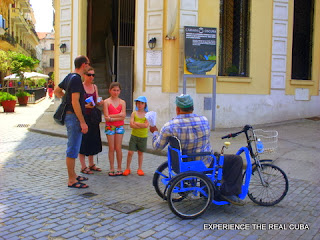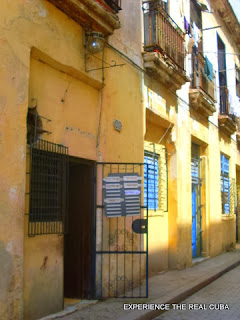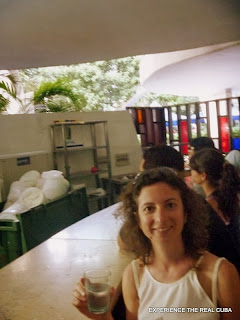SHOULD I TAKE CASH OR CREDIT CARDS TO CUBA?
If you are planning a trip to Cuba and you are confused about what you should or shouldn´t bring to Cuba with regards to currency and credit cards, then my advice would be to take a step back and think about what you would feel most comfortable with. Personally, I’m quite happy to travel with cash only, and take a credit card in case of an emergency, but not everyone feels the same.
- What is the currency of Cuba?There are 2 currencies in Cuba; the Cuban Convertible Peso (CUC) and the Cuban Peso (CUP). The difference in value is around 1:24. In order to avoid an expensive mistake, make sure you know what the CUC and the CUP coins and notes look like and learn how to differentiate between them.
- Which currency can I use as a tourist in Cuba?You will use the CUC to pay for most things i.e. Casas, hotels, taxis, restaurants, bars, souvenir shopping, transport, tours etc. The CUP is the weaker currency. Most Cubans who have government jobs are paid with the CUP. It is not always obvious when you can use the CUP; if you are unsure then speak with your Casa. You can buy CUP at the CADECA or by receiving change from street vendors when paying with CUC. Generally there are fewer opportunities for you to pay for things with the CUP but it is possible to buy things from peso shops, fruit & veg on the streets and markets, eat at some restaurants and buy sandwiches and other food from street vendors.
- Can I buy CUC from my home country?No, it is not possible to buy CUC outside of Cuba, you will have to buy it at the airport upon arrival at a CADECA exchange bureau or by withdrawing money from an ATM. Check out my "10 Tips About Buying Cuban Currency Before you Travel to Cuba".
- Which currency should I bring to Cuba?Well that depends on where you live and which currencies you have access to. Whatever currency you bring you will have to exchange it into CUC, so check out the latest exchange rates in Cuba before you travel so you can make an informed choice. When you are checking out the exchange rates, remember to look at the column that says ‘compra’, because you want to buy CUC and if you are looking to buy using GBP or Euros then multiply instead of divide the rate shown.Being originally from the UK, I have always taken GBP and I’ve noticed over the years that you get more for your money when you exchange GBP. But now that I’m no longer based in the UK it’s not always possible to buy GBP so my second choice of currency is the Euro. Canadian Dollars are also a good currency to take. Whilst other currencies are accepted, they are often weaker so you should check out what is best for you. I would not advise taking US Dollars as you will lose 10% in commission.
- Is it safe to carry lots of cash in Cuba?The first time I went to Cuba I didn’t know what to expect so I was super cautious and I took traveller’s cheques, cash and a credit card. But since then I have felt comfortable and safe carrying cash in Cuba. Luckily for me, I´ve never had any problems, I usually exchange enough money at the CADECA at the airport to see me through at least a few days in Havana and then when I get to Trinidad I tend to exchange enough money to last me for the rest of my stay in Cuba. I prefer exchanging the bulk of my money at the bank in Trinidad as it is a relaxed town and you tend to get served quickly; they can tell you are a tourist and usually deal with you straight away. When I get to the Casa I usually lock my money in my suitcase or I sometimes carry a Safepac, where I keep my money and passport. In any case, I find that staying in a Casa is safe, I have never had money go missing from my room and I don’t tend to carry lots of money around with me on the streets, I just take what I need and leave the rest behind at the casa.
- Where is the best place to exchange money in Cuba?The best place for me to exchange money is the place that has the smallest queue. It doesn’t really make a difference if you exchange money at the bank or at the CADECA, there is very little difference in the exchange rate, so there is no point in wasting your day trying to get the best rate, just do it where it is most convenient for you. The only places I tend to avoid, if possible, are the hotels, as I find that their rates are lower than the bank or CADECA. But if this is your only option then exchange what you need at the hotel until you can find a CADECA or a bank.
- Can I use Credit Cards in Cuba?Many UK / European credit cards affiliated to US banks are still not accepted in Cuba i.e. Citi Bank, Capital One, Maestro, MBNA, AMX, any Mastercard from a Canadian Credit Union, Diners, Egg, Santander/RBS, Marks & Spenser, Alliance & Leicester, etc. So you should contact your credit card supplier to confirm whether their credit cards are accepted in Cuba and to confirm what charges they will apply if used in Cuba.The following UK / European global debit and credit cards can be used in Cuba; Barclays, Lloyds TSB, Nationwide, Post Office, Yorkshire, Tesco, HSBC, Halifax, Natwest, Starling, Monzo.If you are traveling from Canada you are able to use credit cards from the following credit card companies; Royal Bank, TD / Canada Trust, Bank of Montreal, Bank of Nova Scotia, Canadian Imperial Bank of Commerce, PC Financial and Canadian Tire mastercard, as well as Quebec’s National Bank mastercard and Desjardins visa.
- Can I use ATM machines in Cuba?Don’t expect to find ATM machines on every street corner in Cuba. Cuba is not like back at home. Off course, you can find ATMs but they are few and far between, especially outside of Havana, so I wouldn’t rely on just my credit card when travelling around Cuba. If you do want to take your credit card with you, I would suggest that you withdraw money when you find an ATM, do not leave it until the last minute as you may not be able to find one when you desperately want one. Also it might be better to take out large sums of money each time you make a withdrawal rather than taking out small amounts every couple of days; to save you money on the transaction charges from your credit card provider.Hence, if your credit card is accepted in Cuba, you should be able to use your credit card to withdraw money from an ATM machine in Cuba. Most reports I’ve read on the lonely planet forum have been good, it appears that most people have been able to make withdrawals, unless the machine is out of money. In any case, you should check with your credit card provider before you travel to see if it is accepted in Cuba and to find out how much their transaction fees are. If you experience problems with using an ATM machine in Cuba, then your other option would be to go inside the bank and ask them for a cash advance.
- Where can I find more information about Cuba and money exchange?Check out the following article on the Lonely Planet forum.
EXPERIENCE THE REAL CUBA – SUPPORTING CUBAN BUSINESSES
Experience the Real Cuba offers Casas Particulares in Cuba as well as cultural activities and programs in Cuba supporting local Cuban private businesses.
To find out more about Casas in Cuba and our courses and programs (Spanish lessons, Dance lessons, Music lessons, Photography Experiences, Art & Pottery workshops) check out our website:
www.experiencetherealcuba.com
To find out more about Casas in Cuba and our courses and programs (Spanish lessons, Dance lessons, Music lessons, Photography Experiences, Art & Pottery workshops) check out our website:
www.experiencetherealcuba.com
 |
| CADECA Havana |
 |
| Queuing up at CADECA |
 |
| Street Vendors Havana |
 |
| Paying with CUP in Havana |
 |
| Eating Ice-Cream at Coppelia, Havana |
Gracias Matteo
ReplyDelete